The Titanic Memorial In Washington, DC
Today, April 15, marked the 110th anniversary of the Titanic disaster. It is perhaps a little known fact that Washington, D.C., has a monument dedicated to the tragedy. The Titanic Memorial, as it is officially known, celebrates the men who gave their lives so that women and children could be saved. It was designed by Gertrude Vanderbilt Whitney and unveiled in 1931 (read more on the history of the monument below). It was first located at the intersection of Rock Creek Parkway and New Hampshire Avenue, NW. However, in 1968, due to construction of the Kennedy Center, it was relocated, and now sits next to the Washington Channel and Fort Lesley J. McNair in Southwest at the intersection of 4th and P streets. Its location away from the touristy areas may explain why it is less frequented than other D.C. landmarks despite general fascination with the Titanic story.
I first visited the monument earlier this year when it was quite fittingly shrouded in the fog reminiscent of poor visibility that had contributed to the disaster. The fog surrounding the monument and the Washington Channel created a number of haunting images that I managed to capture.
If you saw Titanic the 1997 movie, the monument may look familiar to you. It appears movie creators ‘borrowed’ the male figure’s pose for Kate Winslet’s character in the famous scene.
The Washington Channel near the monument.
The Titanic Memorial Park.
As I mentioned, yesterday, April 15, marked the 110th anniversary of the Titanic tragedy. There was a wreath-laying ceremony. A number of people brought flowers. There was a number of placards installed in the memorial park dedicated to the lives and memory of some of the victims and survivors.

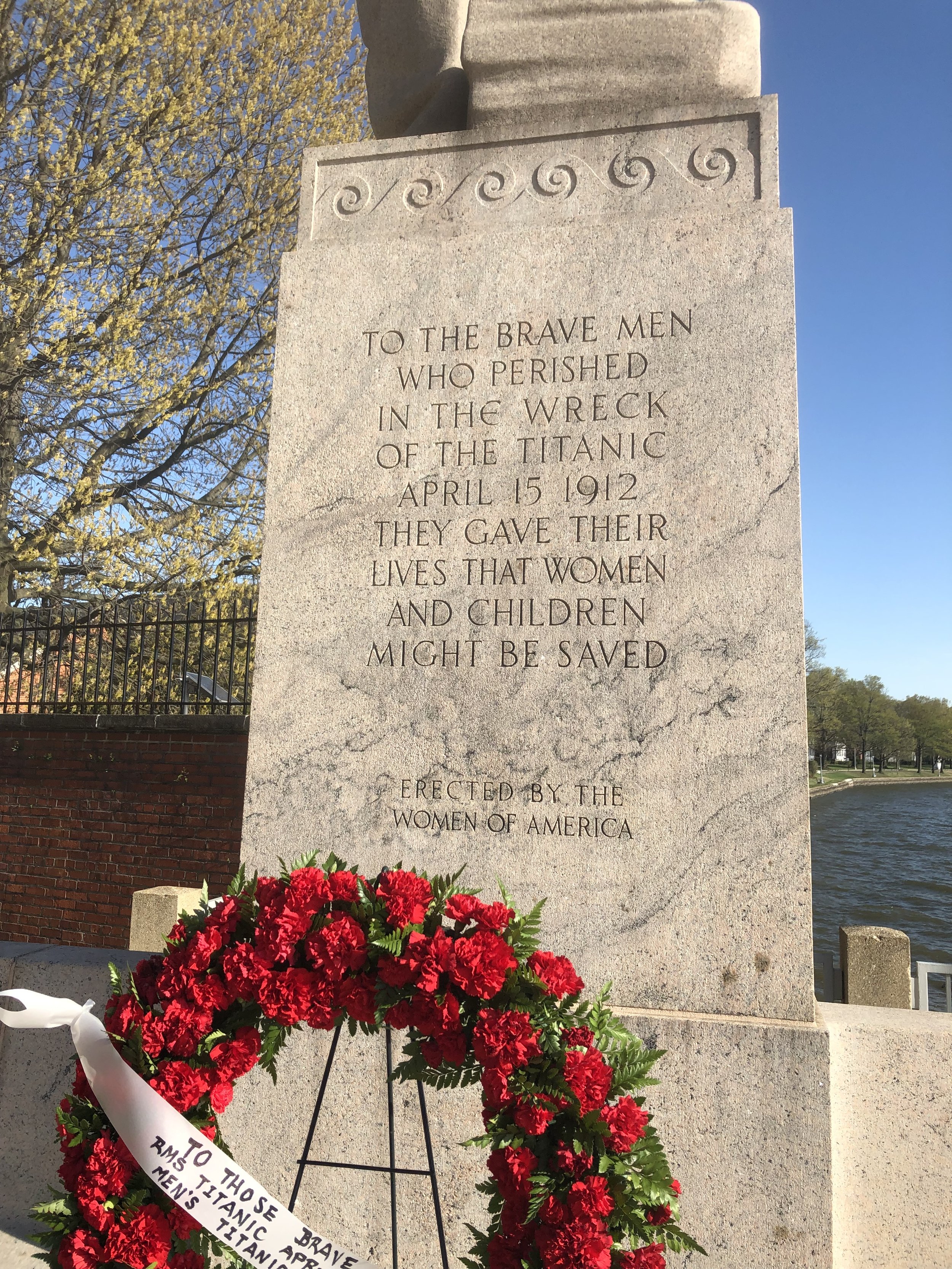
Placards dedicated to the memory of some victims and survivors. Unfortunately, strong winds wouldn’t let them stay straight.
On the pictures below you can see flags in memory of the perished passengers and a placard with data about the number of perished and survivors in each class of cabin and among the crew. Perhaps the most famous survivor was “The Unsinkable Molly Brown.” One of the most celebrated victims were Titanic’s musicians.
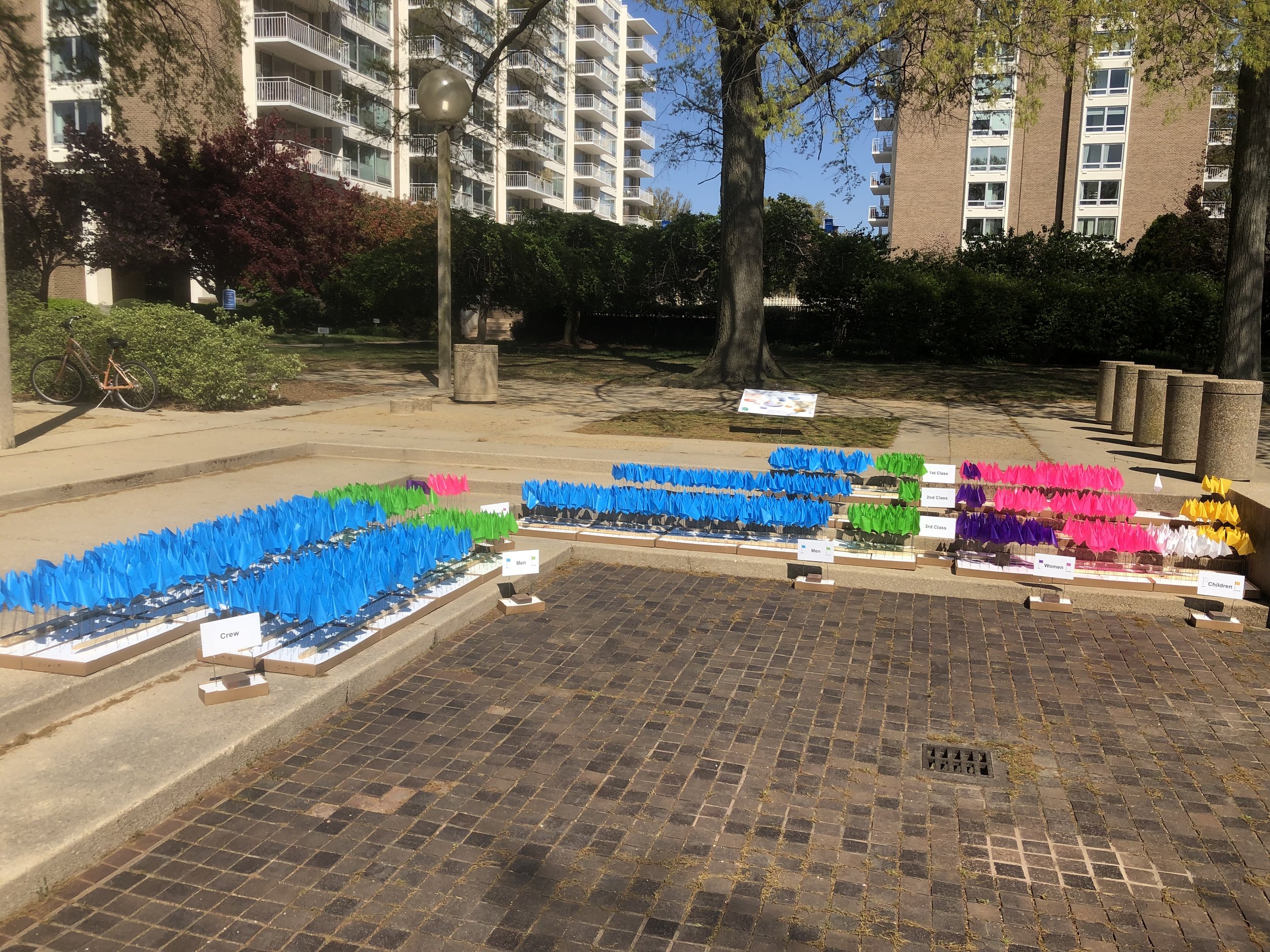

Among both victims and survivors was a group of eight Chinese men en route to Cuba for work. Incredibly, the six who survived were not allowed to disembark in the United States due to the Chinese Exclusion Act. A documentary, “The Six” (“六人”), that tells their story was released in 2021.
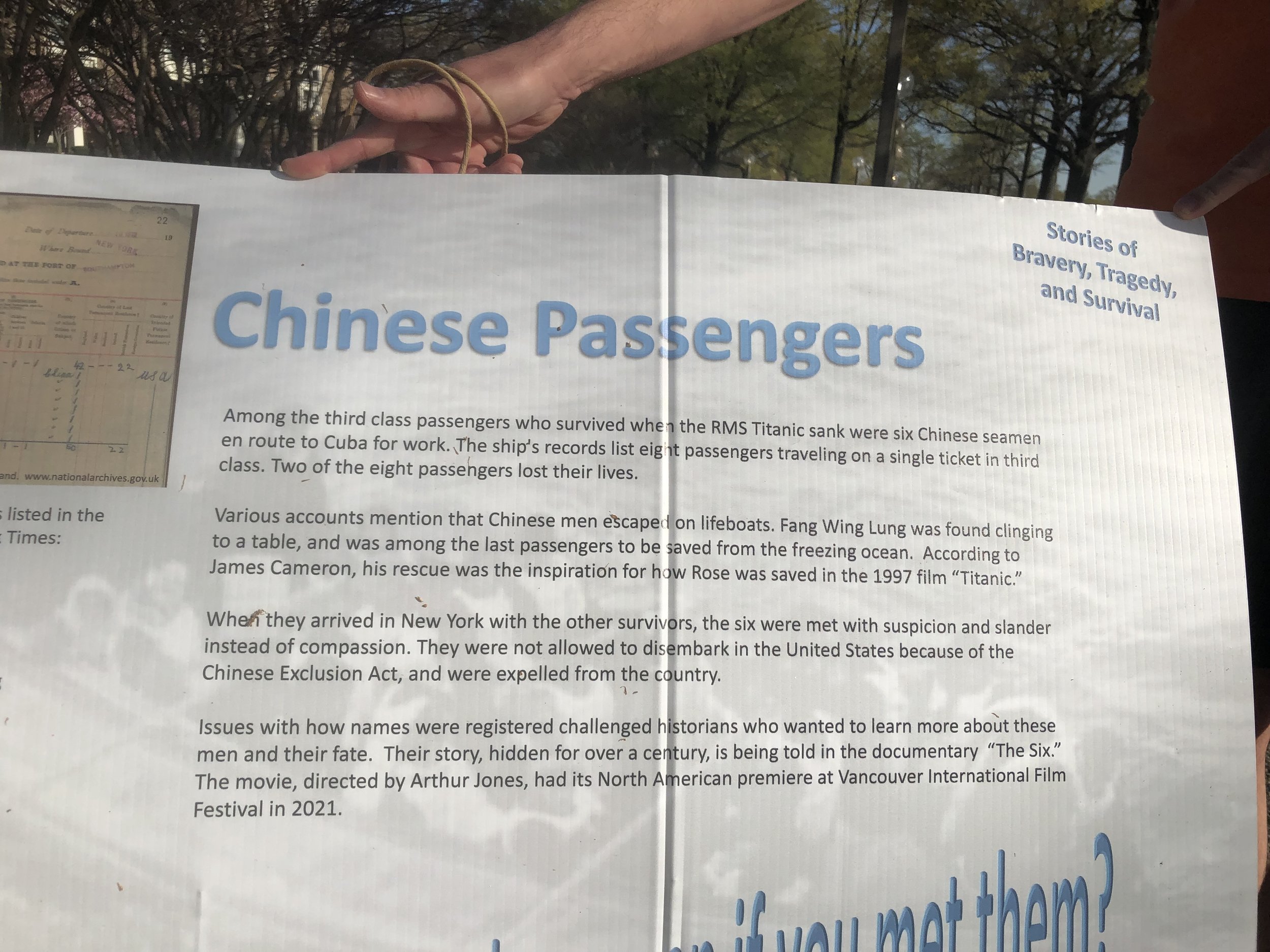
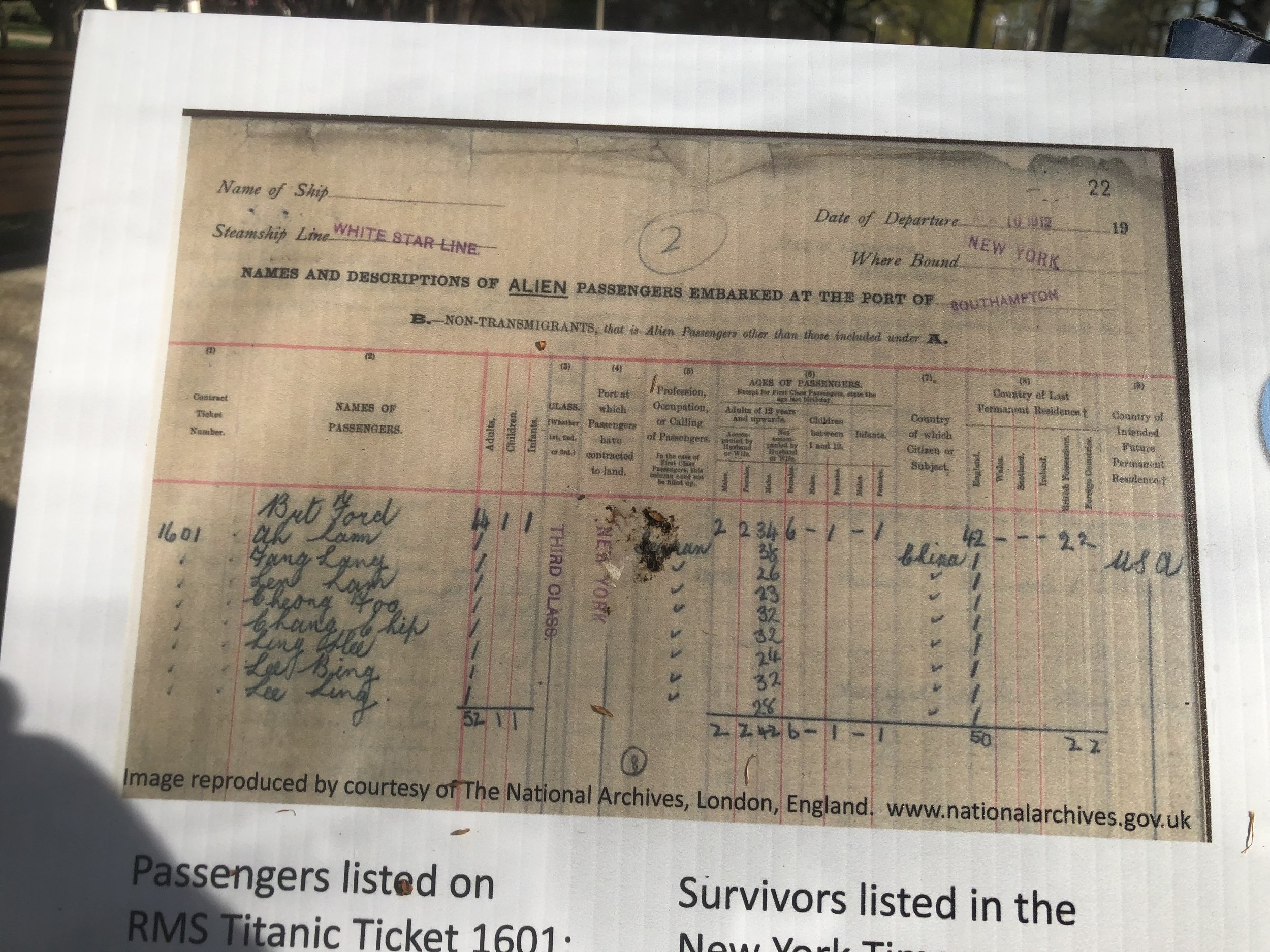
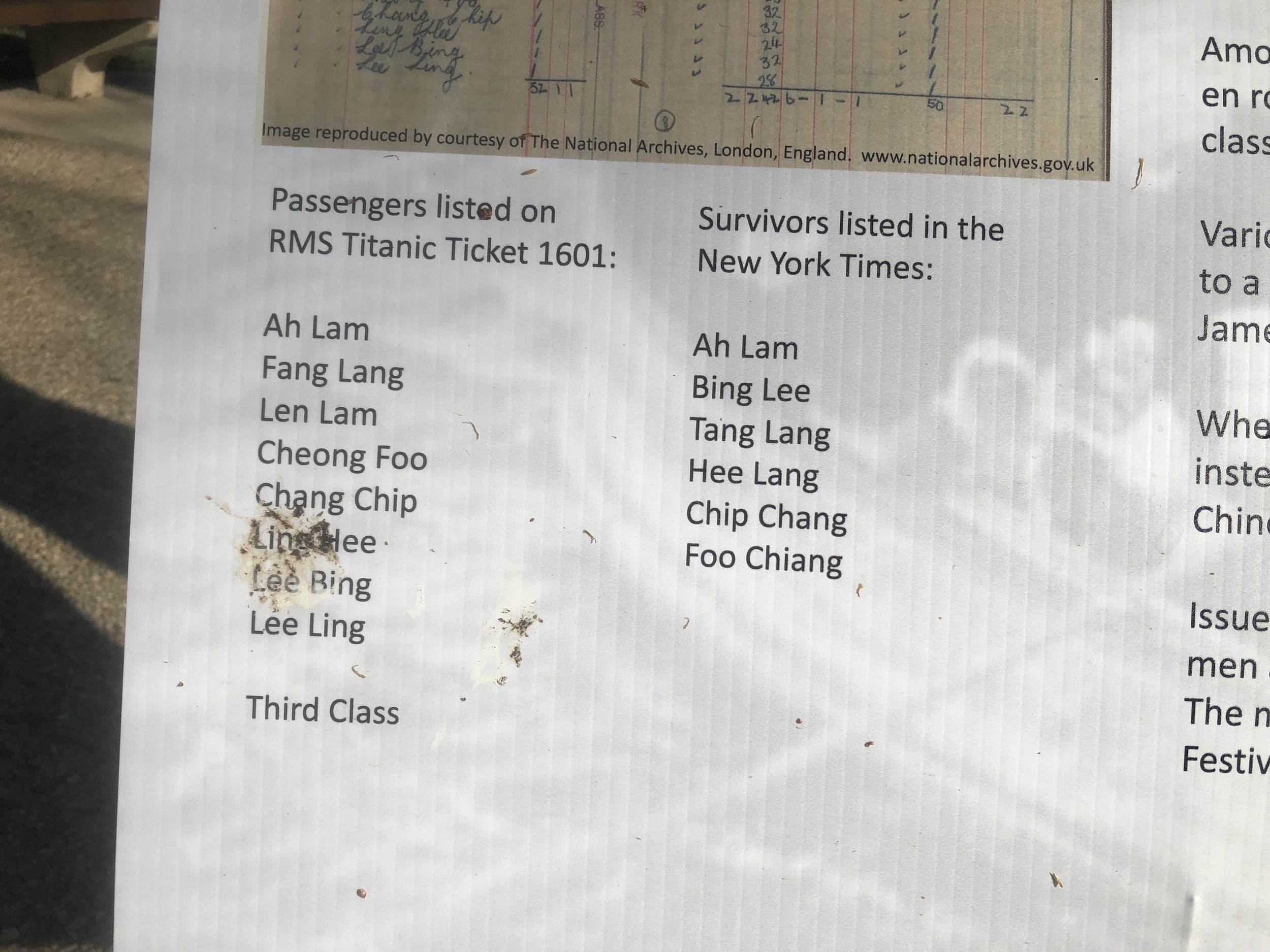
The placards and the flags you saw above were installed by the Friends of Titanic Memorial Park organization established in 2017. Wreath-laying was also arranged by the Friends. They work hard to preserve, restore and maintain the monument and the park. As an all-volunteer non-profit organization they always welcome donations. The Friends organize various events, including guided tours with the National Park Service rangers.
If you are in Washington, D.C., I encourage you to visit the monument and the park. Its connection to the Titanic is not the only point of interest. What is quite unique in being perhaps the first monument in the country that was conceived of, funded and designed exclusively by American women. Shortly after the disaster they established The Women’s Titanic Memorial Association to raise money for the statue. First Lady Helen Taft, who unveiled the statue in 1931, made the first donation. Over 25,000 women across the country made contributions. The Association sponsored a competition open to only female artists. In 1914, Gertrude Vanderbilt Whitney with her Academic Abstraction design was chosen as the winner. Thus, apart from its civic engagement and historical significance, the monument is an important landmark in women’s contribution to arts in America.










